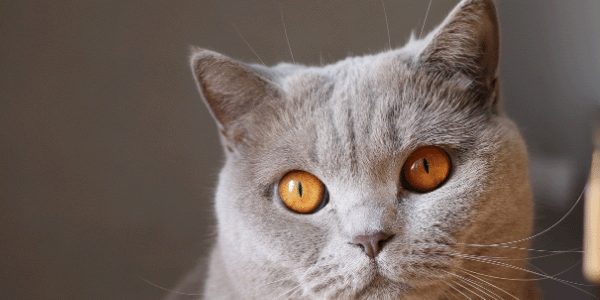- en
Your cat has an ear infection! Now what?
This pet information prescription will help you know what to do, how to make your cat more comfortable, and how to prevent this from happening in the future.
Quick Links

Though cats have a reputation for being meticulous groomers, their ears can be a bit tricky for them to keep clean. Cats can get ear infections from painful ear mites, or from out-of-control yeast or bacteria. So, cleaning your cat's ears will help your cat feel their best.
Our mission is to help save dogs' and cats’ lives through our educational content. To support our efforts, this page may contain affiliate links. We earn a commission for qualifying purchases – at no cost to you.
Ear infections in cats – also known as otitis externa – are inflammation and infection of the ear canal lining. They occur when water, bacteria, or yeast are trapped inside the ear canal. On occasion, they are a result of an ear mite infestation or polyps (a small mass in the ear canal). You may notice that your cat's ear may be red, the inside part of their ear is swollen or has dark brown debris, and there may be a foul smell. There are times when you may see a creamy yellowish discharge as well. You may also notice that your cat’s pinna (the outside of the ear) is swollen or puffy.
Your cat could've gotten an ear infection:
 Because your cat may be painful, there is an increased risk of them biting as a defense mechanism, particularly if their ears are touched. Be sure that any children in your home are aware that your cat may be more sensitive around their head and ears, and don’t leave them together unsupervised.
Because your cat may be painful, there is an increased risk of them biting as a defense mechanism, particularly if their ears are touched. Be sure that any children in your home are aware that your cat may be more sensitive around their head and ears, and don’t leave them together unsupervised.
Be aware of your cat's possible discomfort when cleaning or treating their ear infection. If you aren’t able to do so safely, stop and talk to your veterinarian about the next steps.
Untreated ear infections may eventually lead to hearing loss, changing the way you and your family communicate with your pet.
Follow your veterinarian’s instructions to medicate and/or clean your cat's ears. If your vet recommended other medication to treat a potential cause of the ear infection, like ear mites or skin infection, be sure to give it as directed. Only do the things in the list below if your veterinarian instructed you to, since different infections require different types of cleaning or no cleaning at all.
Based on the type of ear infection and the medications prescribed, your cat may need:

Making the activity of cleaning your pet's ears enjoyable is an excellent goal to have. Because once their ear infection is cleared up, you'll want to do regular ear maintenance – cleaning once a week if possible.
Not that it happens often, but ALWAYS clean your cat’s ear after a bath or if they go swimming. With maintenance cleaning, you need to use an ear cleaner that contains a cleaning and drying agent, such as Otiderm®. Overfill the ear canal with cleaner and massage. BOOM! You are done.
This video tutorial is for dog ear cleaning, but it's a similar process for cats.
The best thing you can do is use the medication your veterinarian prescribed and follow their directions for cleaning (but only if they have recommended this).
Make sure to use the medication for the entire length of time prescribed, even if your cat feels better in a day or two. This is important to make sure the infection is fully treated — and doesn’t come back! Avoid touching or rubbing their ears (except for cleaning) until their infection goes away since this may be uncomfortable for them.
When cleaning and applying medications (if needed) to the ear, use caution not to get either into your cat’s eyes. It may be helpful to put artificial tears gel eye ointment in the eye to protect it from irritation if either substance gets into the eye.
If your cat is the type that scratches aggressively at their ears, especially after cleaning, you may need to place an E-collar to prevent additional trauma to their ear and head.

You should notice a decrease in your cat scratching and shaking their head. Your pet’s ear should look less red, there should be less dark brown gunk, and the odor should be getting better.
If you're cleaning their ears, the stuff coming out should eventually be a clear or light brown color.
If your pet is still uncomfortable with no decrease in scratching or shaking after 3–5 days of treatment, you should call your veterinarian and let them know. After a week, if you're still seeing dark brown debris on the cotton ball when you’re cleaning their ears, this also means that the infection is likely still present. If your pet suddenly develops a head tilt to one side or the other, stop all cleaning and medication and get them to a veterinarian right away.

Ear infections in cats most commonly happen as a result of an ear mite infestation, a bacterial or fungal skin infection, or because of food or environmental allergies. Especially if your cat goes outside, it’s important to keep them on a regular parasite preventative all year long. It will keep them safe from ear mites, as well as heartworm disease, fleas, ticks, and intestinal parasites. However, each parasite preventative protects against different things, so your veterinarian will advise you on the best preventative for your cat and their lifestyle (indoor-only or outdoor cat, or if there are other pets in your home, etc.).
While cat skin issues from allergies, fungal and bacterial infections are less common than their canine counterparts, if you notice your cat scratching frequently, losing hair, or developing any skin lesions or scabbing, it’s important to talk to your veterinarian before they progress and involve their ear canal.
The Pet InfoRx® is made possible, in part, through our partnership with AlignCare®.


© Preventive Vet. All rights reserved. PreventiveVet.com
